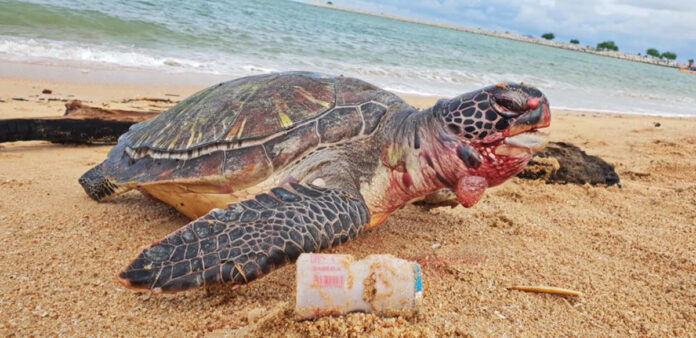
BANGKOK — Rather than tossing a tortoise into a khlong, here are some productive ways to help our turtle friends this World Turtle Day.
Thailand tends to treat its turtles like cannon fodder for tum boon, or making merit, in which the creatures are often released into waters improperly.
“Thailand is a country with rich turtle biodiversity,” Nantarika Chansue, a leading veterinarian in turtle care said. “But Thais just use them to make merit. They are going extinct or being tortured because of us humans. Instead of tum boon in the wrong places, let’s do good by buying food and medicine and supporting proper rehabilitation.”
Read: Many Hurdles for Thailand’s Tortured Turtles
City Turtles
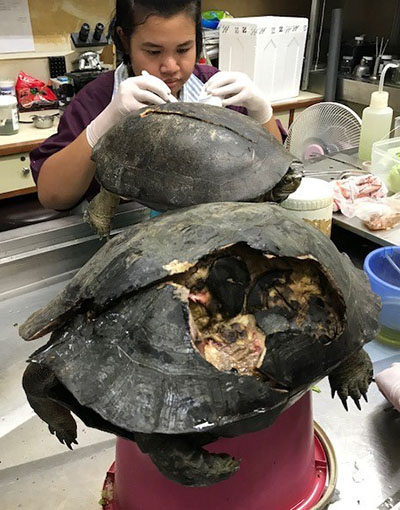
Turtles are run over by cars every day in Thailand but only a fraction are rushed to the country’s only emergency turtle care center in the Veterinary Medical Aquatic Animals Research Center, Chulalongkorn University.
Vets there – such as Nantarika, who famously extracted five kilograms of coins from a sea turtle in 2017 – work to patch up turtles.
According to the center’s February statistics, the center treated a total of 389 turtles – 209 of which suffered from diseases, 154 from road accidents, and 26 from injuries by fishing equipment. After treatment and rehabilitation, 70 percent of the turtles were rehabilitated back into the wild, while only 17 percent died.
A secretary at the turtle hospital said that vets are bracing for an influx of injured turtles this rainy season (when turtles often walk out of wooded areas and onto roads). Vets also travel to temples, where turtles often live in overcrowded ponds.
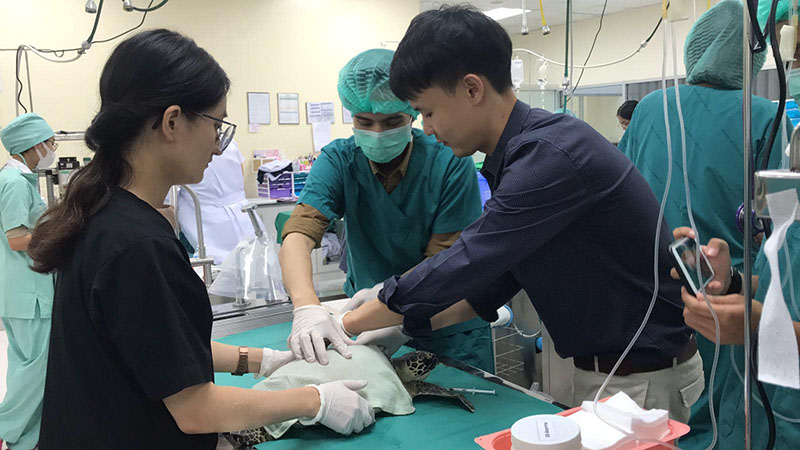
You can donate to the Veterinary Medical Aquatic Animals Research Center through TaeJai, although the website will take a cut. To donate directly to the center, you can transfer money to:
Krungsri Bank
Account No. 123-1-35678-5
Veterinary Medical Aquatic Animals Research Center Fund
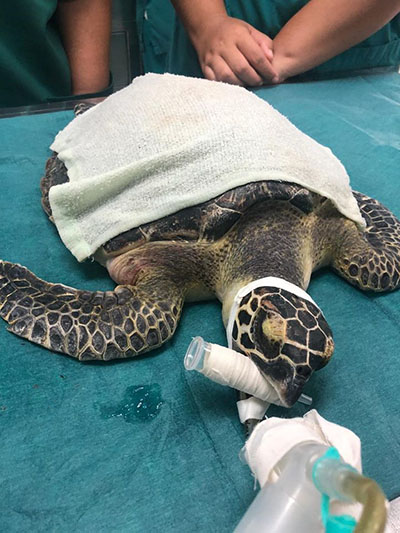
Treatment for turtles is expensive and can take months of hospitalization. A 500 baht donation covers one turtle’s food and medicine for a month. 2000 baht is good for one turtle surgery.
If you own a cafe and want to help turtles while restocking equipment, consider shopping at Turtles’Dudes. Five percent from every purchase goes towards the Veterinary Medical Aquatic Animals Research Center. If you’ve already donated 100 baht or more to the Centre, show your receipt to Turtles’Dudes for a 10 percent discount.
“I started selling eco-friendly products because I saw that photo of a plastic straw stuck in a turtle’s nostrils,” co-founder Chonlathan Naratree said.
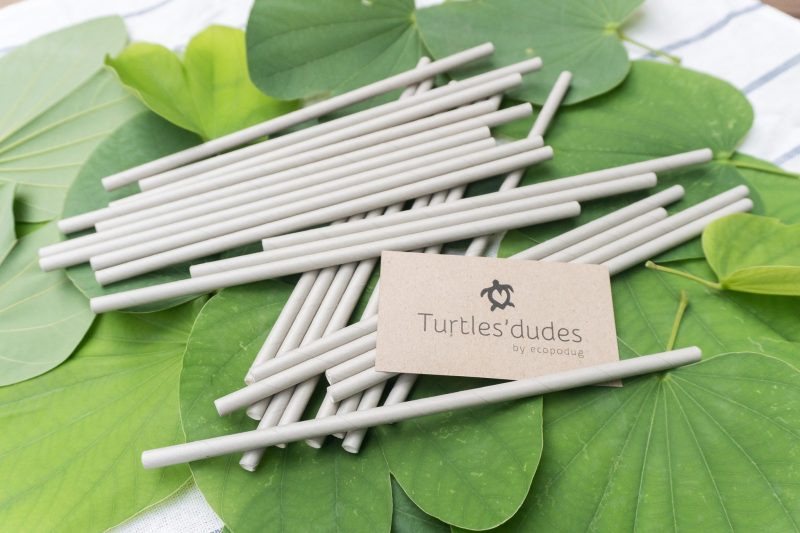
Abandoned Turtles
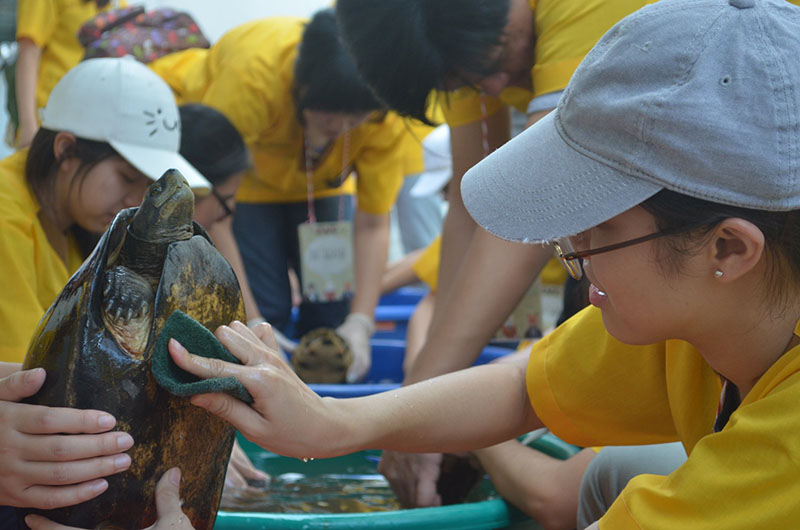
Nantarika also co-runs the Love Turtles Club, a foundation that focuses on helping abandoned pet turtles and turtles living in festering temple ponds.
“Chula doesn’t give us cash for abandoned or temple turtles,” Nantarika said. “So we go out and find them and properly rehabilitate them into the wild.”
A 500 baht donation is enough to buy medicine and food for about one turtle.
“Turtle food is very expensive. It can’t have pesticides or the turtle will die,” explained Nantarika.
Consider donating to the Club at:
Siam Commercial Bank, Ratchadapisek 3 Road Branch
Account No. 106-2-18477-3
Kajon Jirawanon and Nantarika Chansue for the Foundation to Rehabilitate Turtles and Soft-Shelled Turtles
Sea Turtles
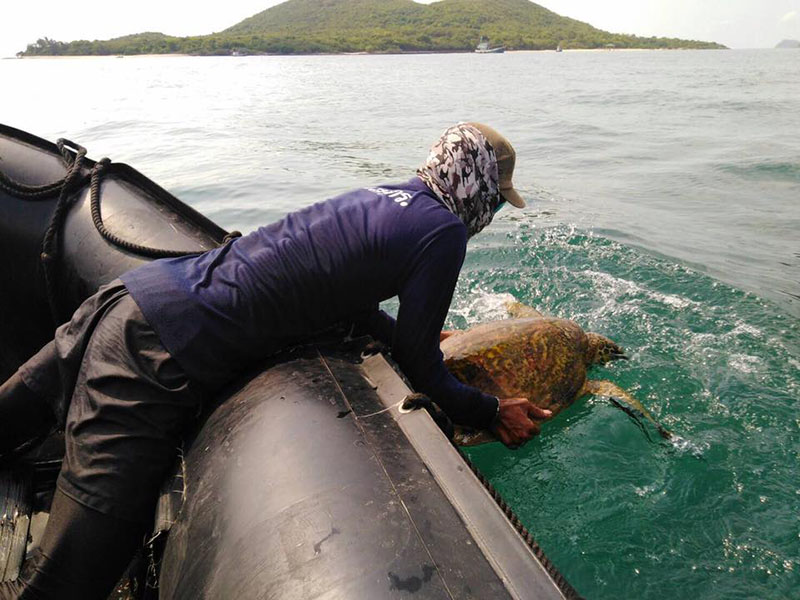
Even if you’re a lover of shell buddies rather than artillery shells, consider donating to the Royal Thai Navy Sea Turtle Conservation Center in Sattahip, Chonburi. Members of the navy rescue sick or injured turtles before releasing them back into the wild.
“People call in with turtles injured from fishing boat propellers all the time,” Chief Petty Officer 1st Class Apichat Nutchawon said. “Please help. Turtles are an endangered species and they might become extinct.”
Funds will go towards maintaining rehabilitation ponds, turtle food and turtle medicine. Transfer money to:
Thailand Military Bank, Sattahip Branch
Account No. 302-720-2245
Borihan Tao Fund
If visiting the center, donations can be made in person.
Injured Turtles
If you encounter an injured turtle along the coast, contact the nearest Department of Marine Resources research branch for emergency care.

But when marine officers can’t reach animals in time, it’s up to locals familiar with sea life to administer first aid. Sucks Free shop is donating 10 percent of sales from tote bags to fisherfolk who live in Baan Saphan Hin village, Laem Klat district in Trat.
“These fishermen are out on the ocean every day and are the first to encounter injured animals. They alert the Marine and Coastal Resources officials and give first aid to the animals,” said Rawiwan Boonchai, the owner of Sucks Free.
Officials travelling to Trat from the nearest Department of Marine Resources research branch can take two hours, during which animals may die.
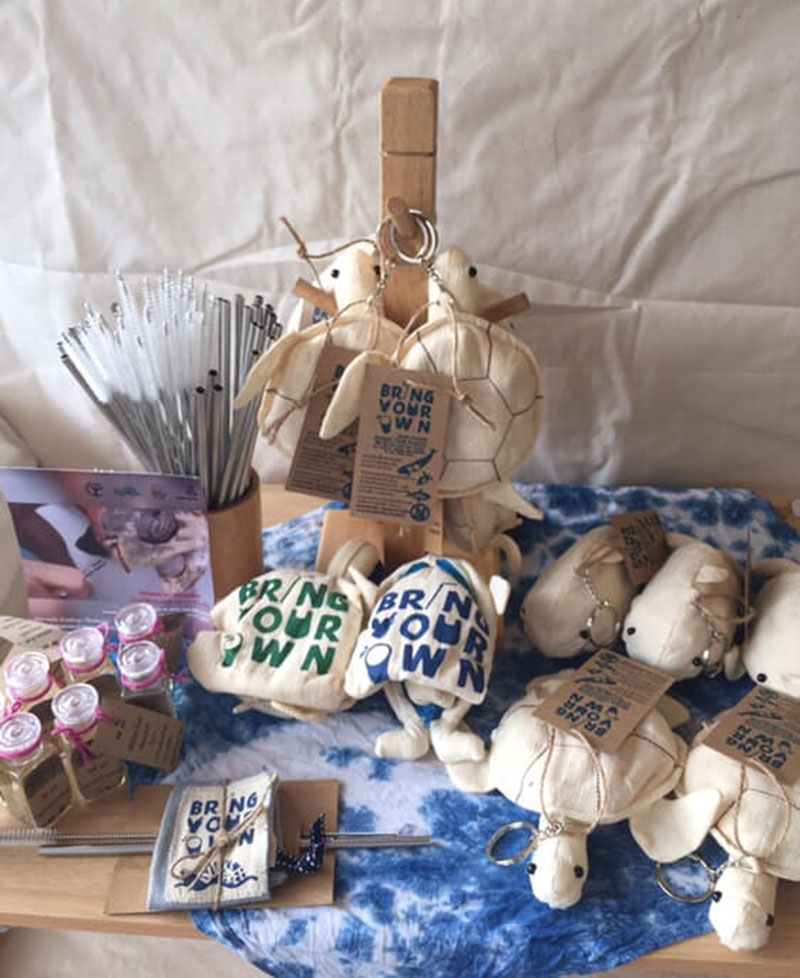
Rawiwan, who is based in Maha Sarakham in Isaan, says she set up her shop because of low awareness in the region of environmental issues. She decided to sell metal straws, and keychains shaped like turtles and Irawaddy dolphins that unzip to become reusable tote-bags.
“Turtles suffer the most from plastic, since they eat it thinking that it’s jellyfish. So I want people to think about that each time they use my bag,” she said. “Here, almost no shops use glass cups and using plastic straws is automatic. Awareness of conserving the ocean is low, since Isaan is far from the sea.”
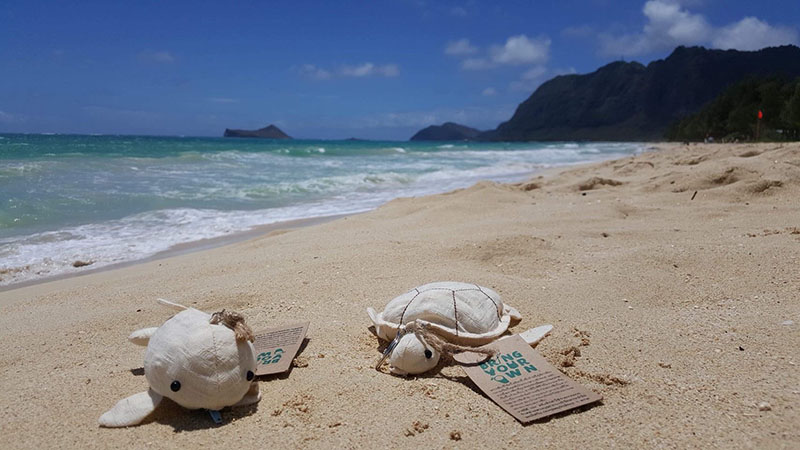
Taxidermy Turtles
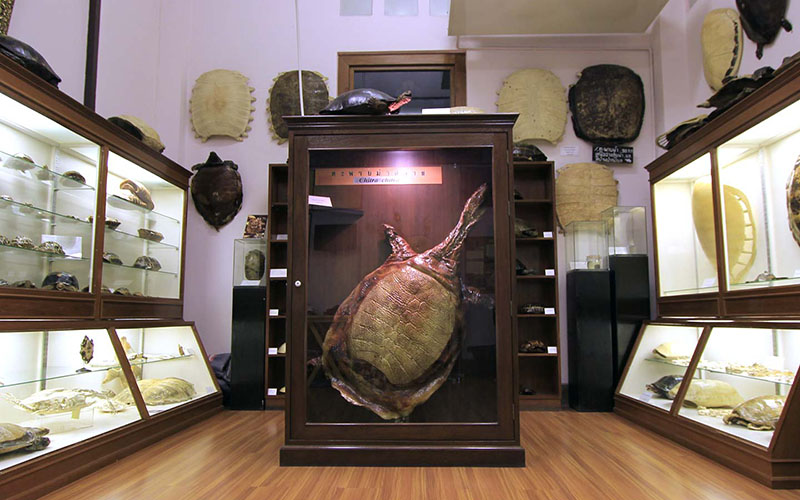
Already donated, but need a more morbid guilt trip? Check out the Turtle and Soft-Shelled Turtles Museum, an exhibit at the Museum of Natural History in Chulalongkorn University. Around thirty species of turtles and soft-shelled turtles found in Thailand are on display here – and soon, this may be the only place to find certain endangered species.
“We almost can’t find any of the larger turtles in the wild anymore,” Naratip Chantarahawat, a zoologist working at the museum said. “People like to think they’re making merit. But a lot of times they toss tortoises, which can’t swim, into the river. Any turtles thrown into the Chao Phraya have a 100 percent death rate.”
The room’s main attraction is a stuffed Asian narrow-headed softshell turtle. Found only in Southeast Asia, they are listed as critically endangered by the IUCN Red List.
Admission is free but donations to help fund the museum are accepted. The museum is open weekdays, 9am to 4pm.
Related stories:
Many Hurdles for Thailand’s Tortured Turtles
Piggy Bank, Giant Sea Turtle Who Ate Too Many Coins, 25
Nation Mourns Piggy Bank, Takes Hard Look At Self
Aum Patcharapa Defends Releasing Fish for Merit
Most Thais Are Daily Straw Users – Especially Women, Survey Says
Turtley Crowded: Temple Promises More Space for Reptile Residents (Photos)
















































